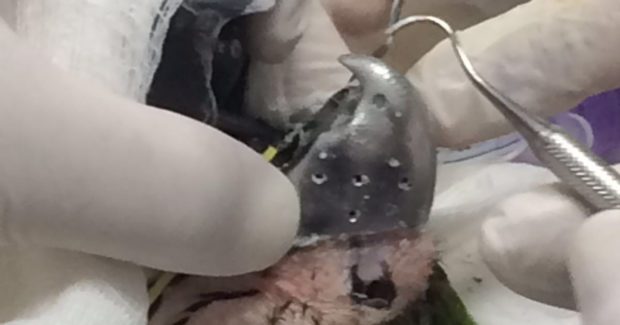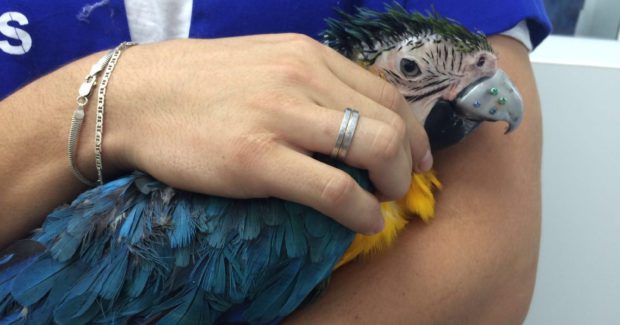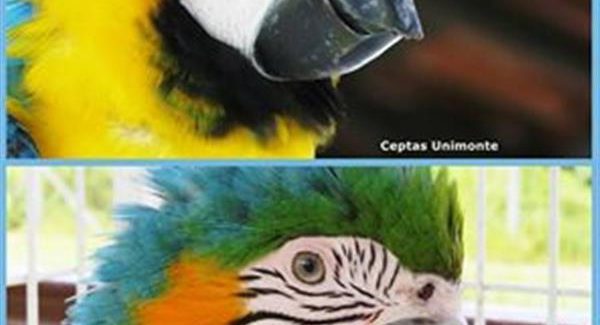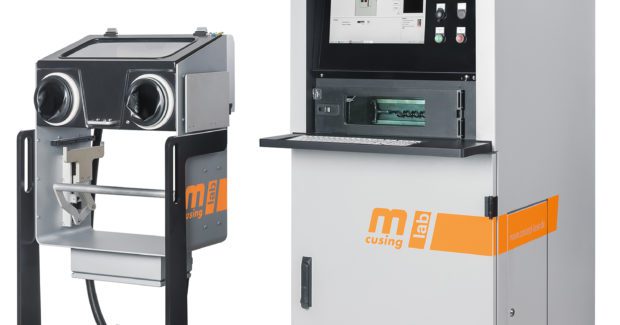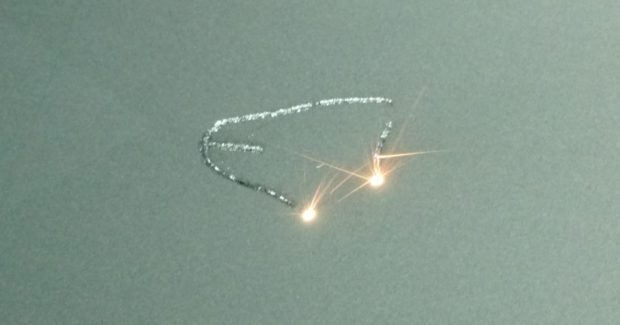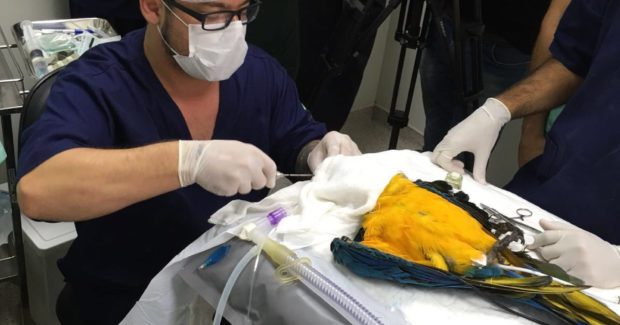Veterinary Medicine Adopts 3D Metal Printing
The durability and strength of metal, coupled with a nimble approach to product development and reduced lead times, are driving the widespread adoption of metal additive manufacturing for orthopedic care and prosthetics. Here is one example where 3D metal printing recently proved to be a truly lifesaving process.
Posted: July 27, 2016
By allowing unprecedented freedom of design, 3D metal printing enables some incredible applications. Renato Archer Technology and Information Center (CTI; Campinas, Brazil) recently demonstrated how metal additive manufacturing can truly be lifesaving. For the first time ever, they 3D printed a prosthetic titanium beak and implanted it on Gigi, a blue macaw in Brazil that had fallen into the hands of illegal traders of wild birds and severely damaged its beak. The unusual prosthetic literally saved the bird’s life because macaws cannot eat solid foods without a beak.
The team in Brazil has worked on medical applications for animal life before, making new shells for turtles and designing new beaks for injured toucans, but all of those prosthetics were made of plastic. This time CTI partnered with a team of animal specialists, namely a facial reconstruction specialist, veterinary dentist and 3D designer, to design a metal beak – specifically titanium – that was appropriate for this case because macaws use their beaks to open seeds and break through hard shells. Durability and strength are key to the natural survival of the beak. Titanium is biocompatible, lightweight and corrosion-resistant, so it was chosen as the perfect solution.
A Mlab cusing R powder-based laser melting 3D metal printing system was selected to manufacture the titanium beak for the following reasons because the machine has one of the smallest footprints in the industry, which makes it compatible with a lab environment. It also requires less ancillary equipment than most systems. The laser melting system can accommodate small build volumes (3.5 in x 3.5 in x 3 in) that are ideal for higher value materials because it allows the user to work with smaller powder batches. This 3D metal printing system can also build with reactive materials like titanium, yet provide superior safety for the operator while producing fully-dense parts with a surface finish that is unmatched in laser systems.
A series of photographs were taken of the malformed beak and used to create a digital 3D model for the perfectly fitting prosthetic, which was then laser melted on the Mlab cusing R system and later secured in place on the bird with bone cement and colorful rhinestone-styled orthopedic screws. The bird was able to try out the beak within 48 hours and made a full recovery while awaiting placement at a zoo. This is a prime example of how the unlimited geometric freedom of the metal additive manufacturing process enables the manufacture of perfectly fitting implants that are ideally suitable to overcome injuries and deformities for each respective application.



